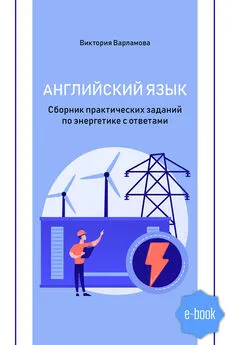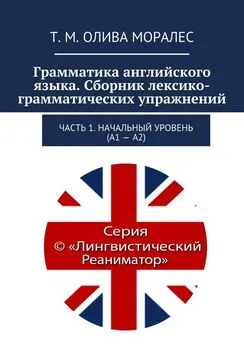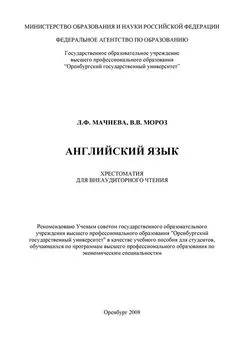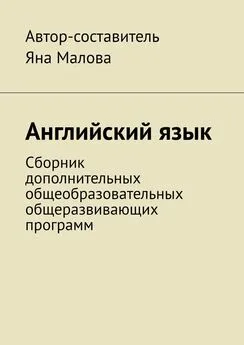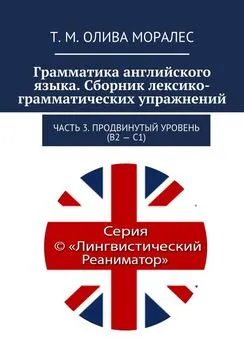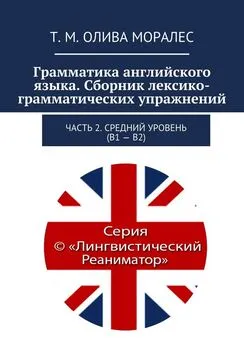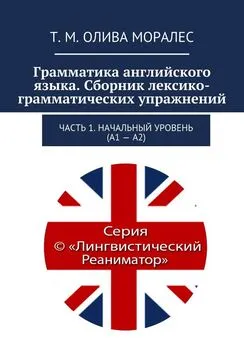Виктория Варламова - Английский язык. Сборник практических заданий по энергетике с ответами
- Название:Английский язык. Сборник практических заданий по энергетике с ответами
- Автор:
- Жанр:
- Издательство:неизвестно
- Год:2021
- Город:Санкт-Петербург
- ISBN:9785996516391
- Рейтинг:
- Избранное:Добавить в избранное
-
Отзывы:
-
Ваша оценка:
Виктория Варламова - Английский язык. Сборник практических заданий по энергетике с ответами краткое содержание
Данный сборник включает учебные тексты по теме: «Энергетика» и упражнения на отработку лексического и грамматического материала. Сборник содержит материалы, способствующие закреплению навыков устной и письменной речи по заявленным темам.
Английский язык. Сборник практических заданий по энергетике с ответами - читать онлайн бесплатно ознакомительный отрывок
Интервал:
Закладка:
| Существительные | Глаголы |
| 1. origin (? _____) | to originate (происходить) |
| 2. compression (сжатие) | to compress (? _____) |
| 3. conversion (? _____) | to convert (преобразовывать) |
| 4. direction (направление) | to direct (? _____) |
| 5. transmission (? _____) | to transmit (передавать) |
| 6. propagation (распространение) | to propagate (? _____) |
| 7. expansion (? _____) | to expand (расширяться) |
2.3. Прочитайте и переведите текст:
Energy may take various forms — sound, chemical, and electrical energy, for example Sound consists of waves of alternate compression and rarefaction that transmit kinetic energy through a medium. If there is no medium, there is no sound; sound waves cannot pass through a vacuum. All sounds originate from vibrating objects, such as the vocal cords in the human throat, the skin of a drum, or the strings of a violin. The vibrations are then passed on through a medium — most commonly air — until they strike the ear drum; the ear converts the vibrations into nerve impulses, which pass to the brain where they are interpreted as sounds. Microphones are the other most common instruments of sound waves into electrical signals.
Waves and sound. There are two types of waves in physics: longitudinal and transverse. Sound waves are of the longitudinal type — that is, their vibrations take place in the same direction as they travel.
Transverse waves are those in which the vibrations occur at right angles to the direction, in which the waves travel — as happens, for example, when a length of rope is moved regularly up and down to give it a wavelike appearance. Ocean waves and light waves also travel by transverse propagation.
Frequency and intensity. The frequency of a sound wave is the number of wavelengths that are completed in a given period of time. The universal unit of measurement is the hertz (Hz), which represents one complete wavelength, or cycle, per second. The human ear is sensitive to sound in the frequency range from about 20 Hz. As people grow older, their ability to perceive high frequencies diminishes.
The intensity of sound is measured in terms of the amount of power that passes each second through a given area perpendicular to the direction of the sound wave. The intensity unit is the decibel (db).
Velocity. Sound can be transmitted by any medium — gas, liquid, or solid — and all sound waves travel at a constant velocity through any given medium at a constant temperature. But depending on their elasticity and density, some mediums transmit waves faster than others.
The velocity of sound is affected by temperature; as the temperature increases, the medium expands. Its density decreases, with the result that the velocity of sound increases.
2.4. Найдите предложение, содержание которого не соответствует теме и смыслу текста.
1. A sound wave consists of a series of alternate compressions and rarefactions of the medium through which it passes.
2. Waves of alternate compression and rarefaction transmit kinetic energy through a medium.
3. As people grow older, their ability to perceive high frequencies diminishes
4. There are two types of waves in physics: longitudinal and transverse.
5. Solar energy is an alternative source of energy.
2.5. Найдите перевод словосочетаний на английский язык в тексте:
1. кожа барабана ________________________________________________
2. струны скрипки ______________________________________________
3. продольная волна ____________________________________________
4. человеческое ухо _____________________________________________
5. постоянная температура ______________________________________
6. эластичность и плотность ____________________________________
7. частотный диапазон __________________________________________
8. частота звуковой волны ______________________________________
9. скорость звука ________________________________________________
10. плотность среды _____________________________________________
11. частота звука ________________________________________________
2.6. Вставьте в пропуски предлоги: through/in/from, где необходимо.
1. Sound waves cannot pass _______ a vacuum.
2. All sounds originate _______ vibrating objects.
3. The vibrating objects are then passed on _______ a medium.
4. Frequency can be measured _______ physically.
5. The human ear is sensitive to sound _______ the frequency range ______ about 20 Hz.
6. The intensity of sound is measured _______ terms of the amount of power.
__________________________________________________________________
Through— сквозь/через; in — в; from — от;
__________________________________________________________________
2.7. Дайте ответы на вопросы по тексту:
1. What originates from vibrating objects?
2. How can all living beings hear sounds?
3. What are the types of waves in physics?
4. What is intensity of sound?
5. How does sound depend on medium and temperature?
2.8. Переведите предложения на русский язык письменно:
1. A sound wave consists of a series of alternate compressions and rarefactions of medium.
2. Alternate compression and rarefaction transmit kinetic energy through a medium which they pass.
3. Sound can’t pass through a vacuum.
4. Vocal cords in human throat, the skin of a drum or the strings of a violin are good examples of vibrating objects.
5. Each complete wave cycle is made up of one compression and one rarefaction.
Тема 3. Энергия излучения
3.1. Найдите перевод терминов
| 1. nature and properties | a) волновое движение |
| 2. electromagnetic radiation | b) среда |
| 3. wave motion | c) плотность среды |
| 4. medium | d) двоичная природа |
| 5. density of the medium | e) природа и свойства |
| 6. dual nature | f) общие характеристики |
| 7. common characteristics | g) электромагнитная радиация/излучение |
| 8. “particles,” or quanta | h) вакуум космоса |
| 9. vacuum of space | i) волны разной длины |
| 10. gamma rays | j) «частицы» или кванты |
| 11. different wavelengths | k) гамма лучи |
| 12. visible and infrared light | l) видимый и инфракрасный свет |
| 13. transparent | |
| 14. constant velocity |
3.2. Найдите прилагательное в каждой группе слов. Переведите
a) frequency, velocity, activity, visible, density;
b) to travel, to vary, nature, natural, naturally;
c) wavelength, field, fundamental, vacuum, ray;
d) medium, photon, to emit, density, magnetic;
e) speed, space, various, to consist of, molecule;
f) air, metal, ray, constant, frequency, velocity;
g) radiation, to call, electromagnetic, slowly, wave;
3.3. Прочитайте и переведите текст:
Energy may take various forms — sound, chemical, and electrical energy, for example.
Nature and properties of radiant energy. The various forms of radiant energy have many common characteristics, the most fundamental of which concerns their nature. They are all wave motion, consisting of varying electric and magnetic fields, but they can also be considered as being made up of “particles,” or quanta, of energy called photons. Radiant energy therefore has a dual wave/particle nature. The most important forms of electromagnetic radiation are visible and infrared light for the life.
Another basic characteristic of electromagnetic radiation is the fact that it does not need a medium in which to travel, and so it can travel through vacuum of space. But the various forms of radiation can also travel through other mediums: light travels through air, water, and glass, for example, and even pass through metal; that is to say, even a metal is “transparent” to X-rays and gamma rays.
In a vacuum, all forms of electromagnetic radiation travel at the same constant velocity — called the speed of light. In other transparent mediums, they travel more slowly, the velocity depending on the wavelength of the radiation and, generally, on the density of the medium. In other mediums, different wavelengths travel at slightly different velocities. The longer the wavelength, the faster the radiation travels. So in the case of visible light, red light travels faster than blue light in any particular transparent medium does.
The various types of radiant energy have different wavelengths and frequencies. These two characteristics multiplied by the frequency are equal to the velocity. Because the velocity is constant in any particular medium, wavelength and frequency are inversely proportional to each other; the longer the wavelength, the lower the frequency is, and vice versa.
3.4. Найдите предложение, содержание которого не соответствует теме и смыслу текста.
1. Energy may take various forms — sound, chemical and electrical energy, for example.
2. The various forms of radiant energy have many common characteristics, the most fundamental of which concerns their nature.
3. Another basic characteristic of electromagnetic radiation is the fact that it does not need a medium in which to travel.
4. In a vacuum all forms of electromagnetic radiation travel at the same constant velocity.
5. You can buy an air conditioner which work without electricity.
3.5. Найдите перевод этих предложений в тексте.
Читать дальшеИнтервал:
Закладка:
